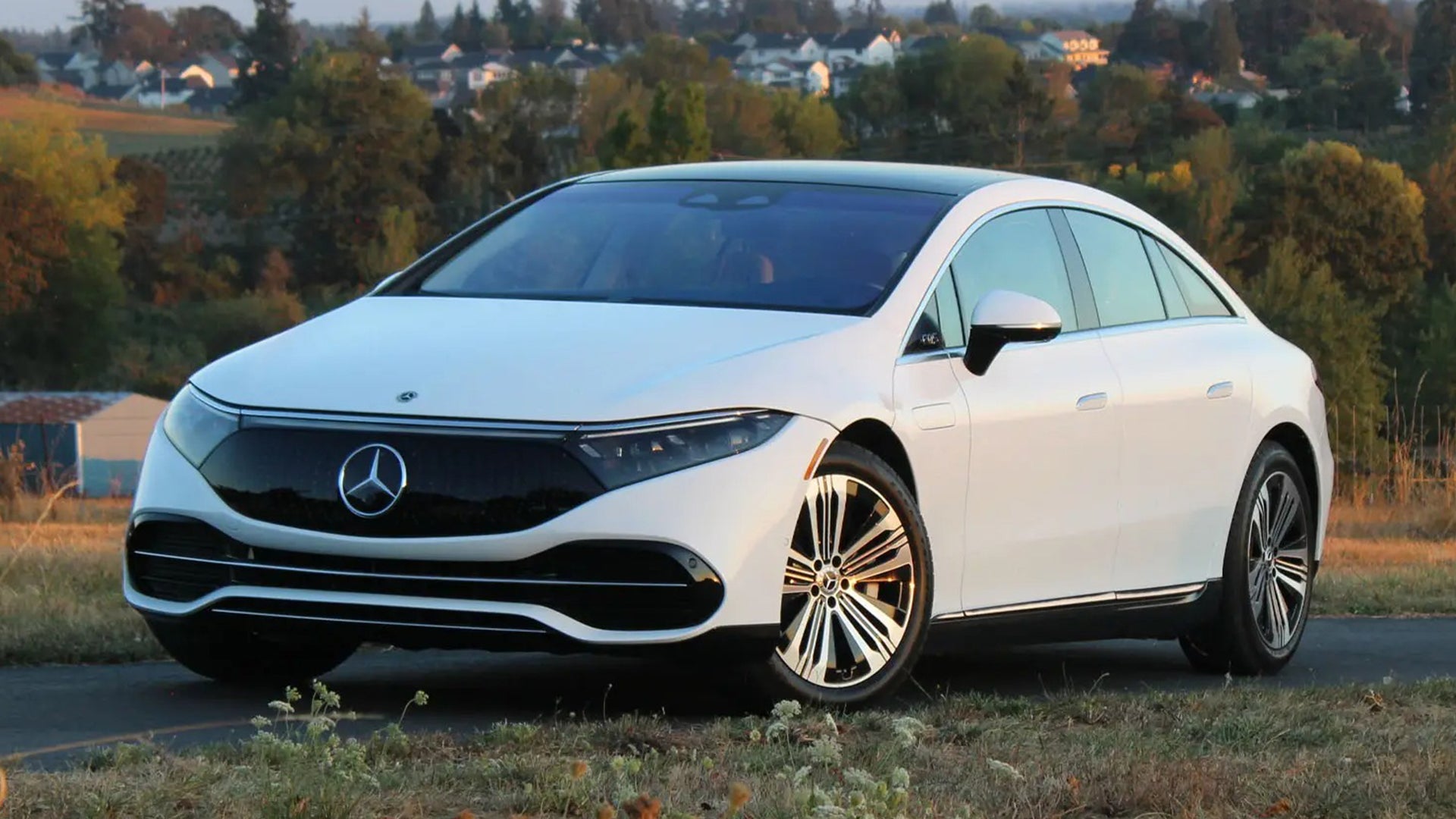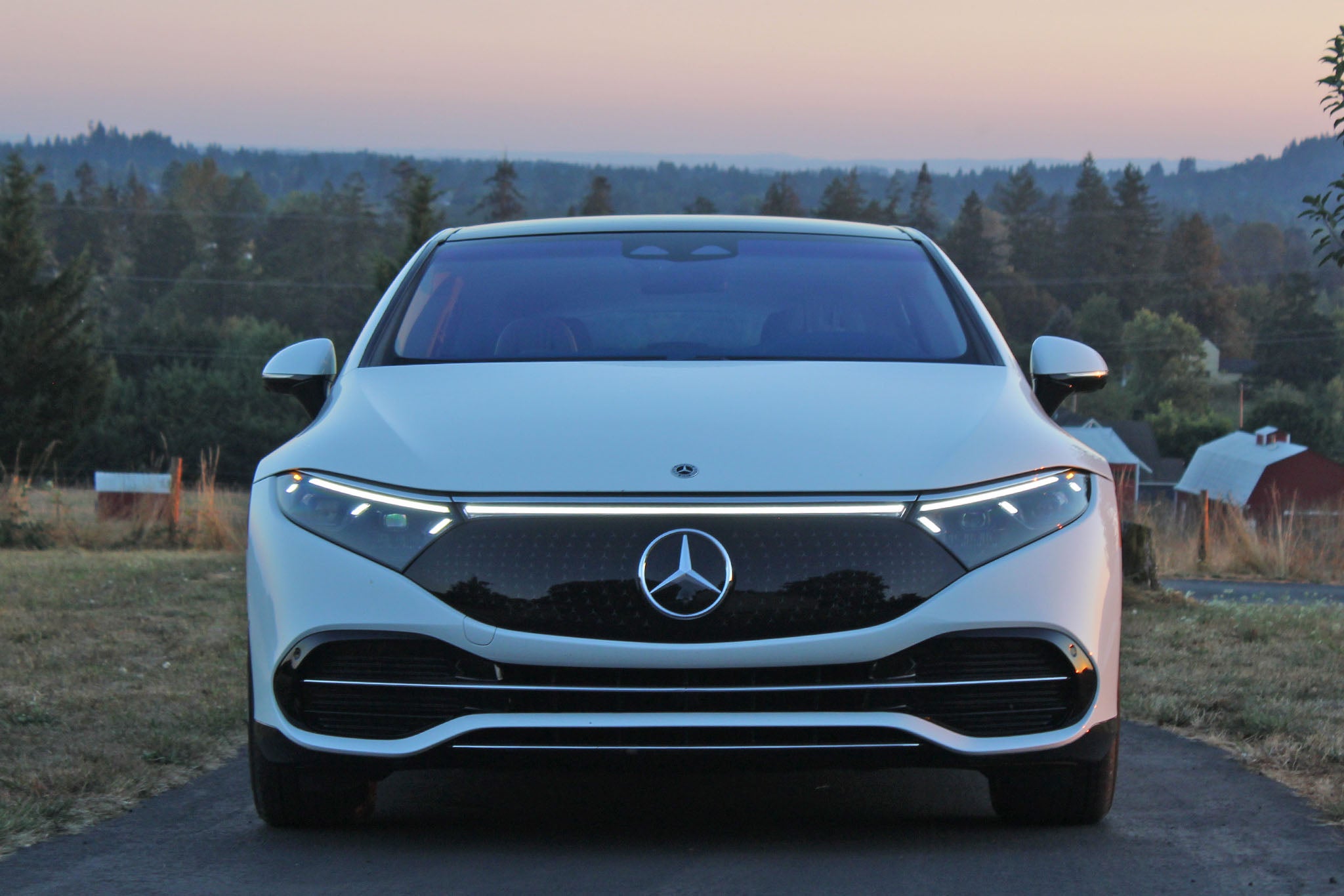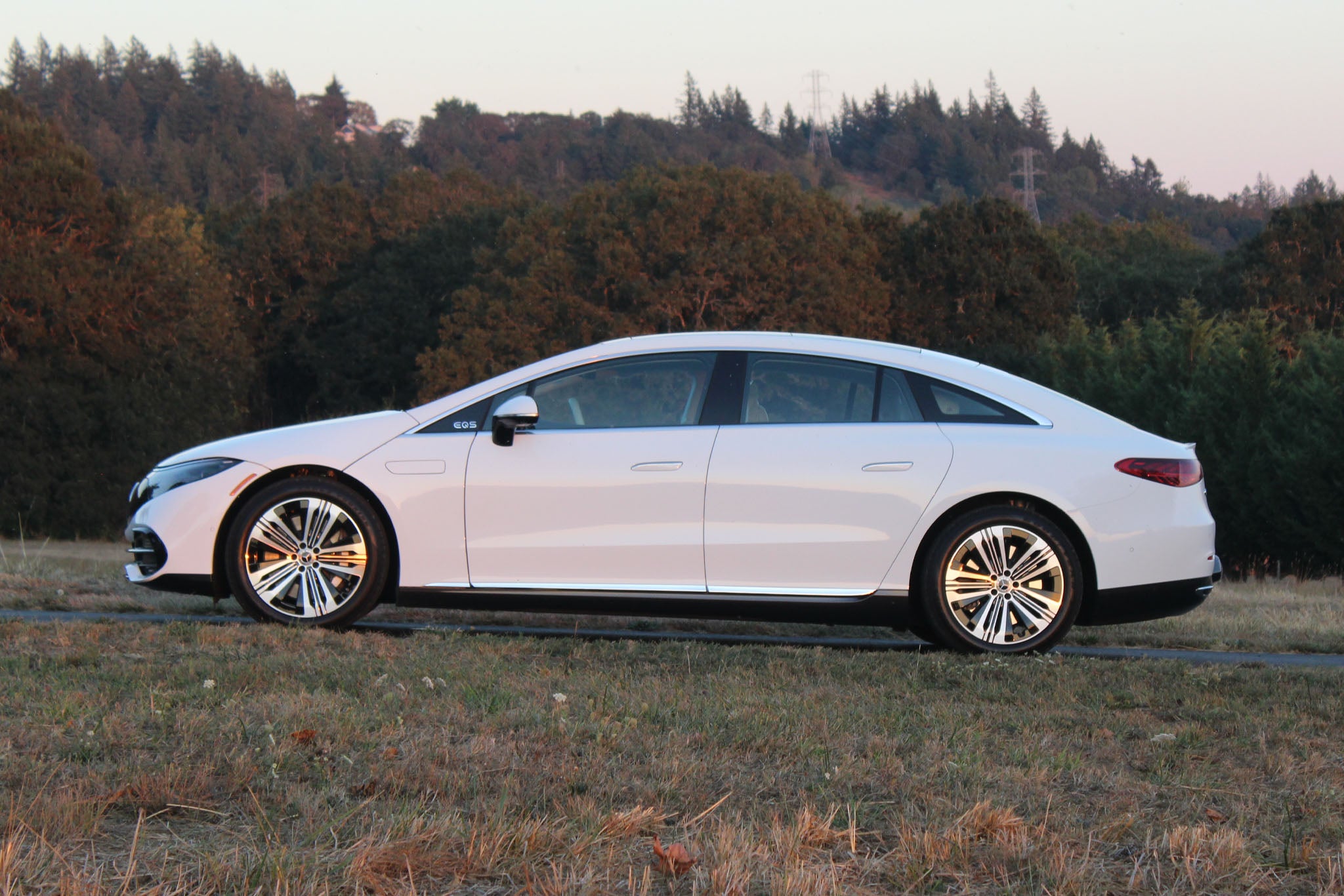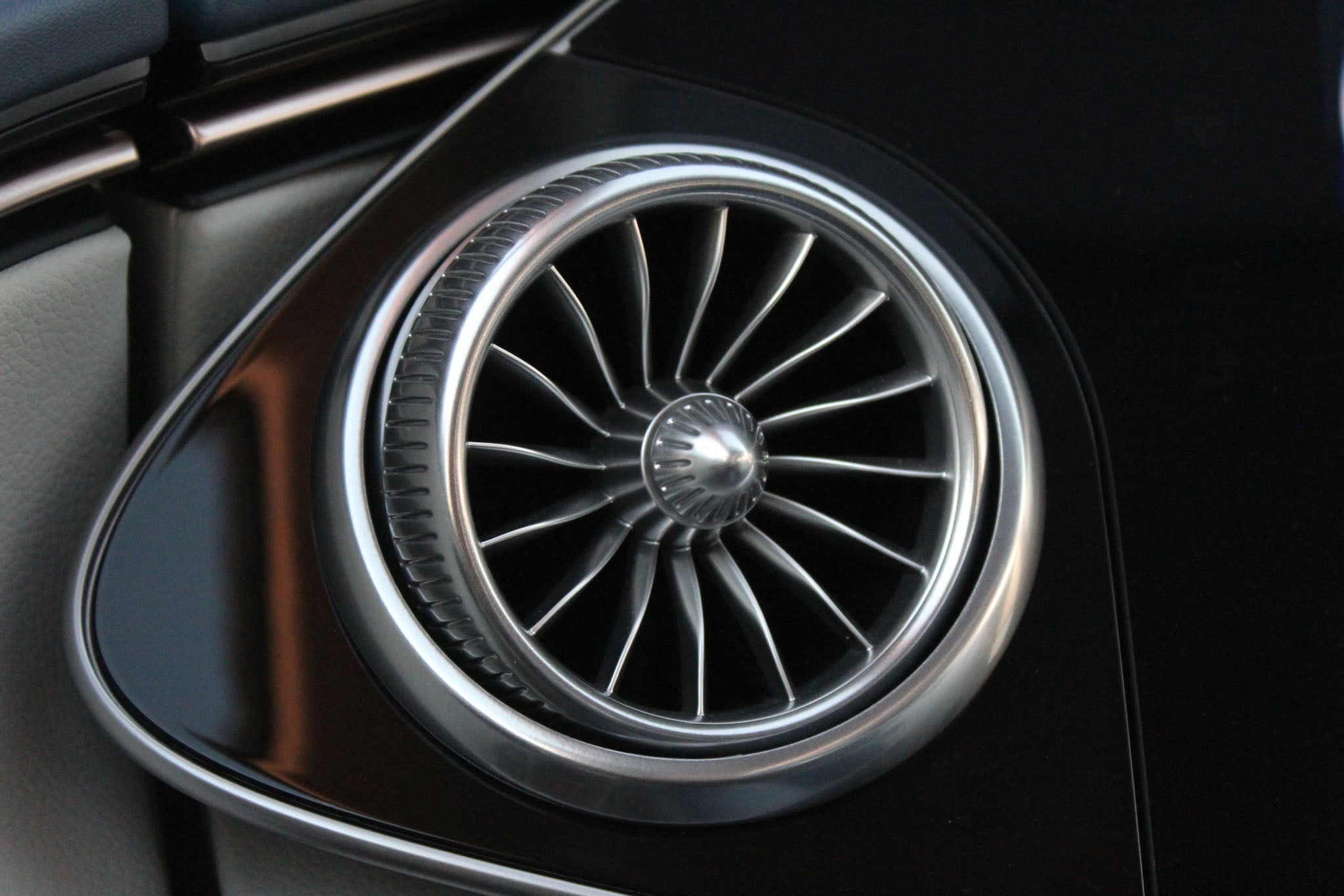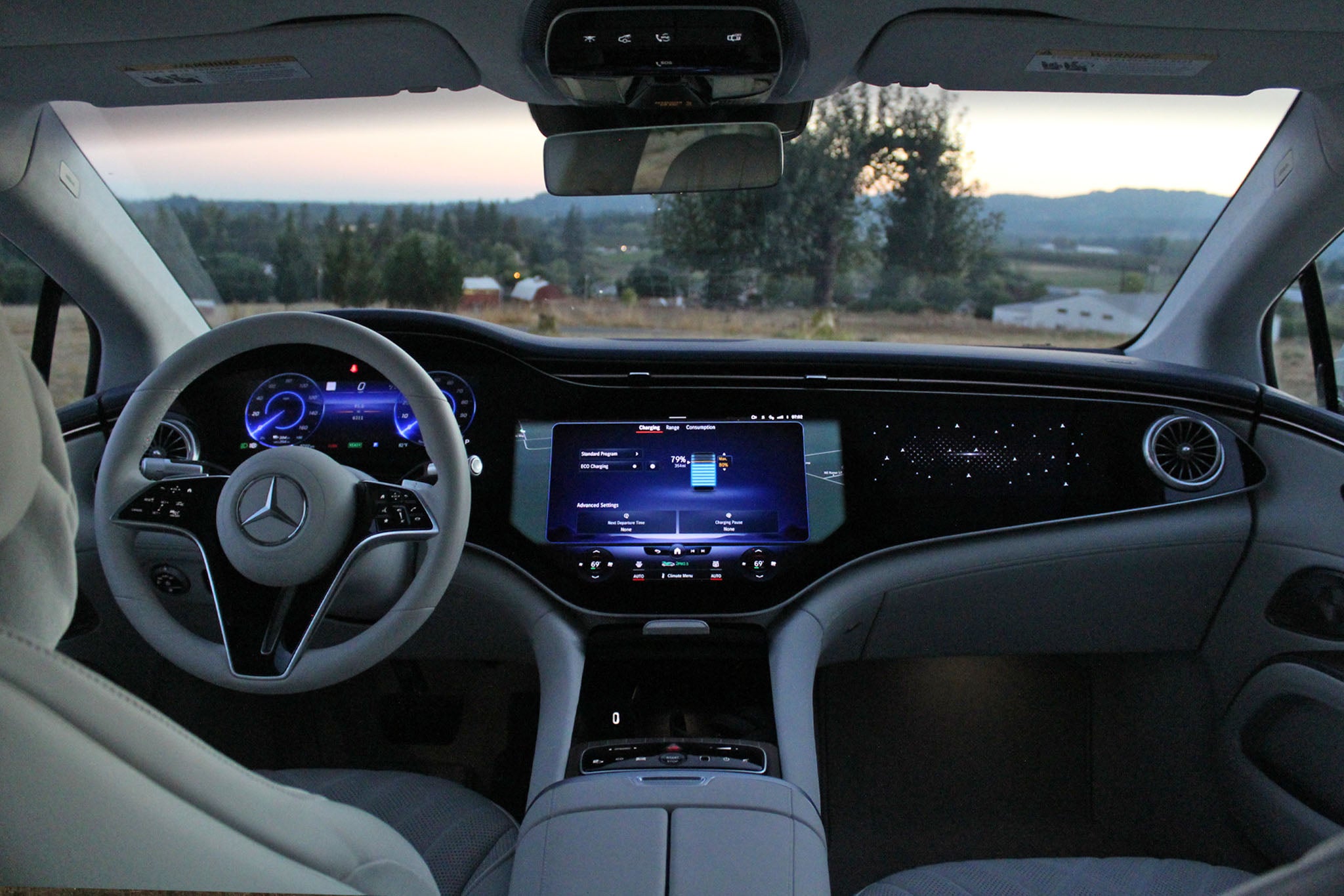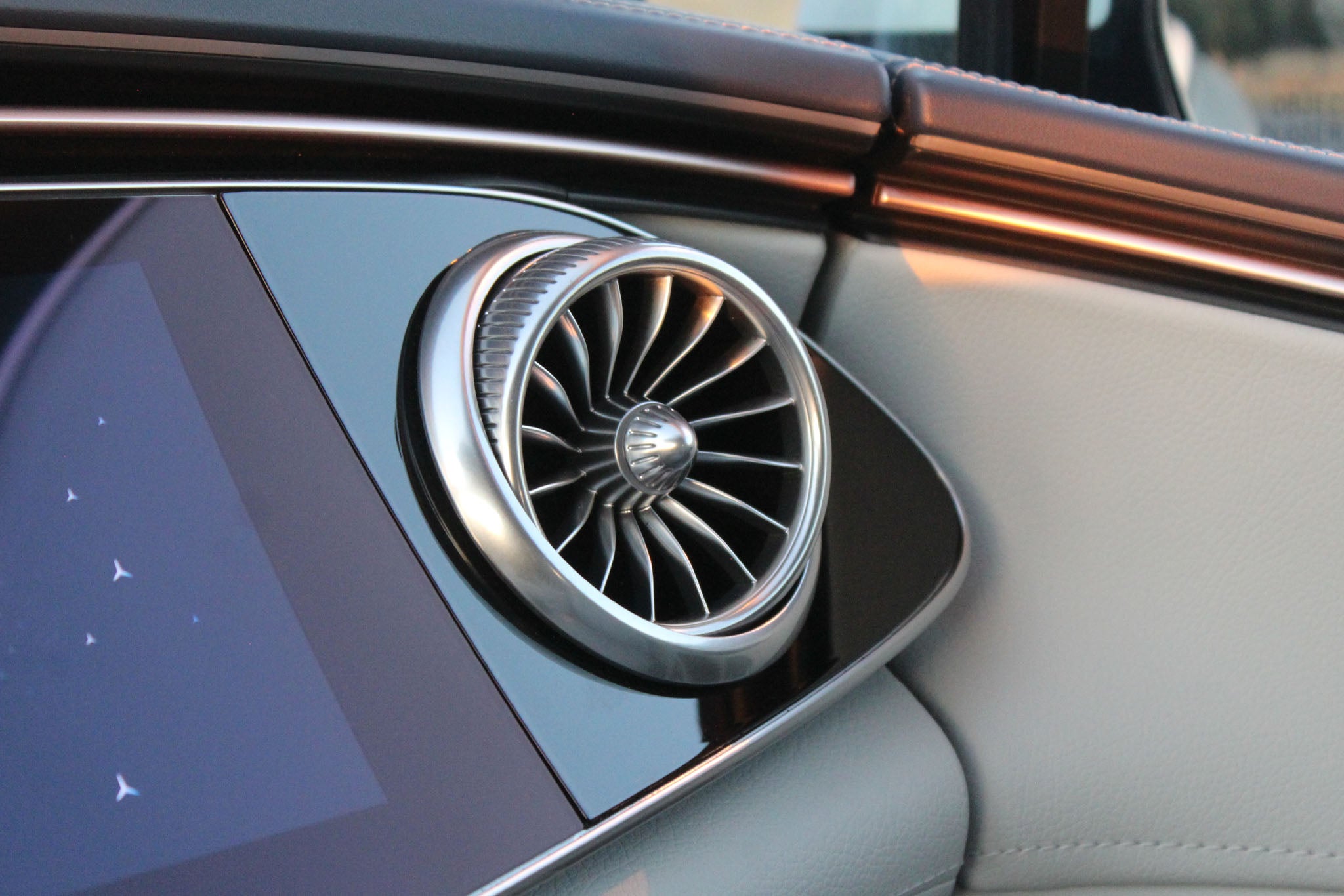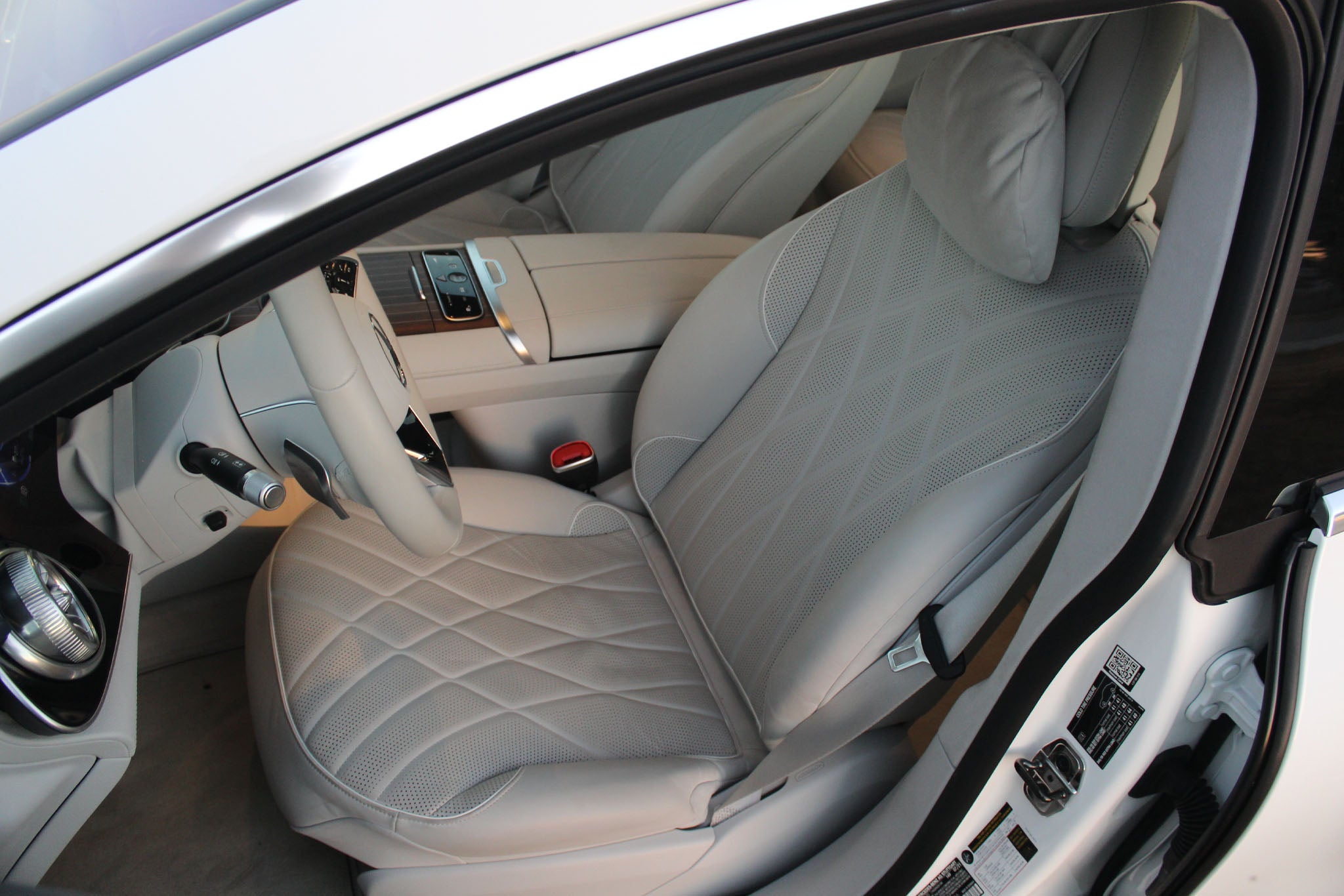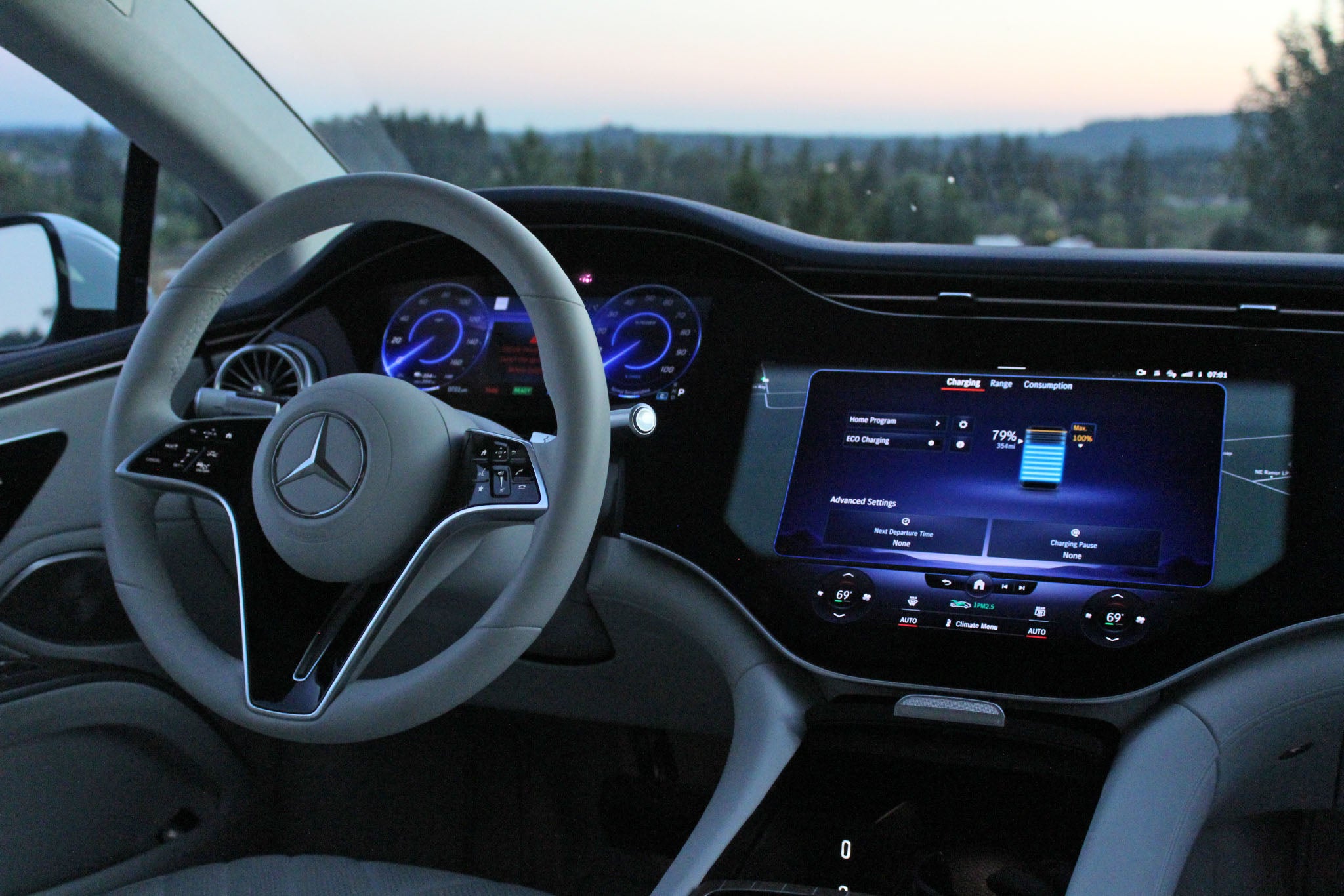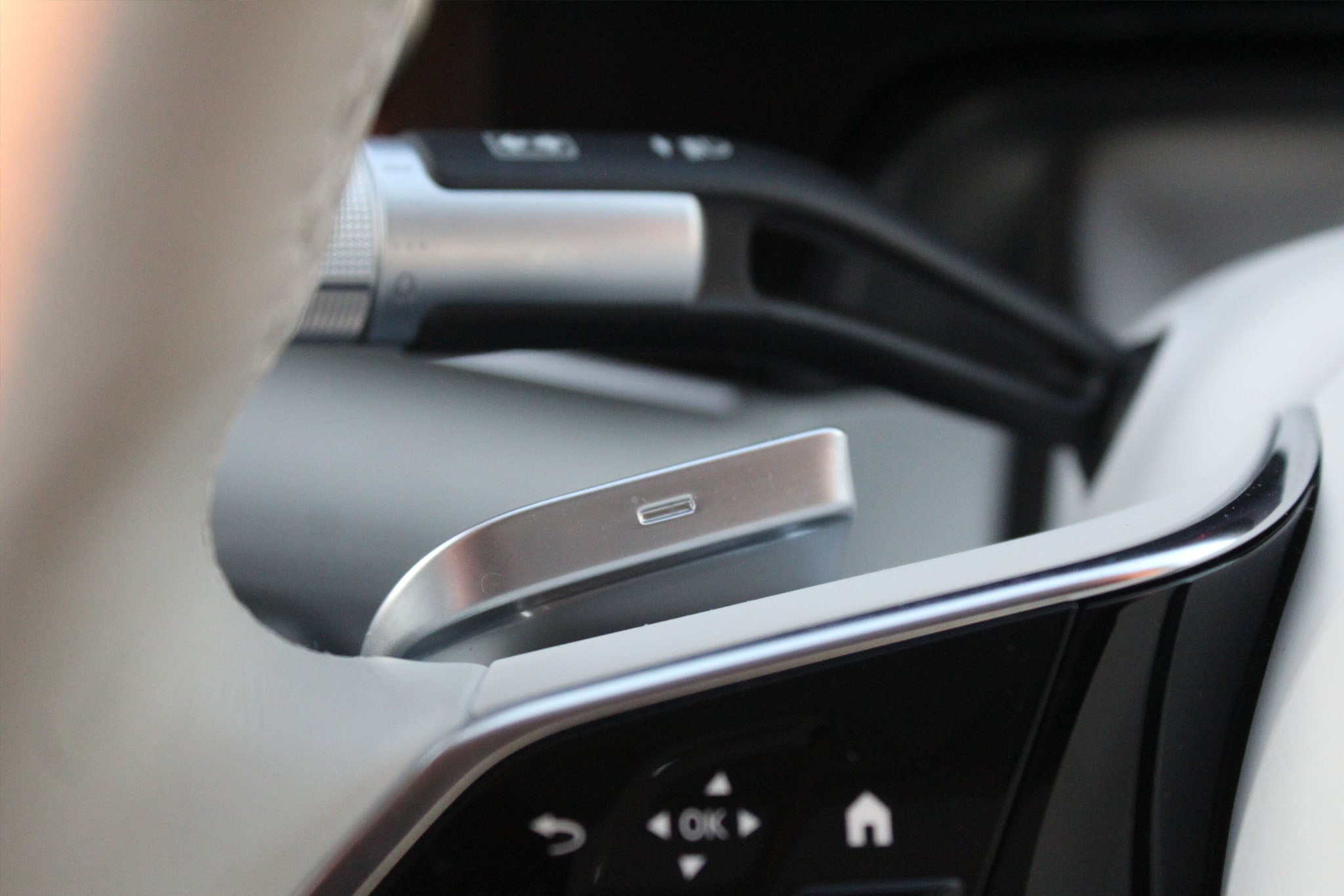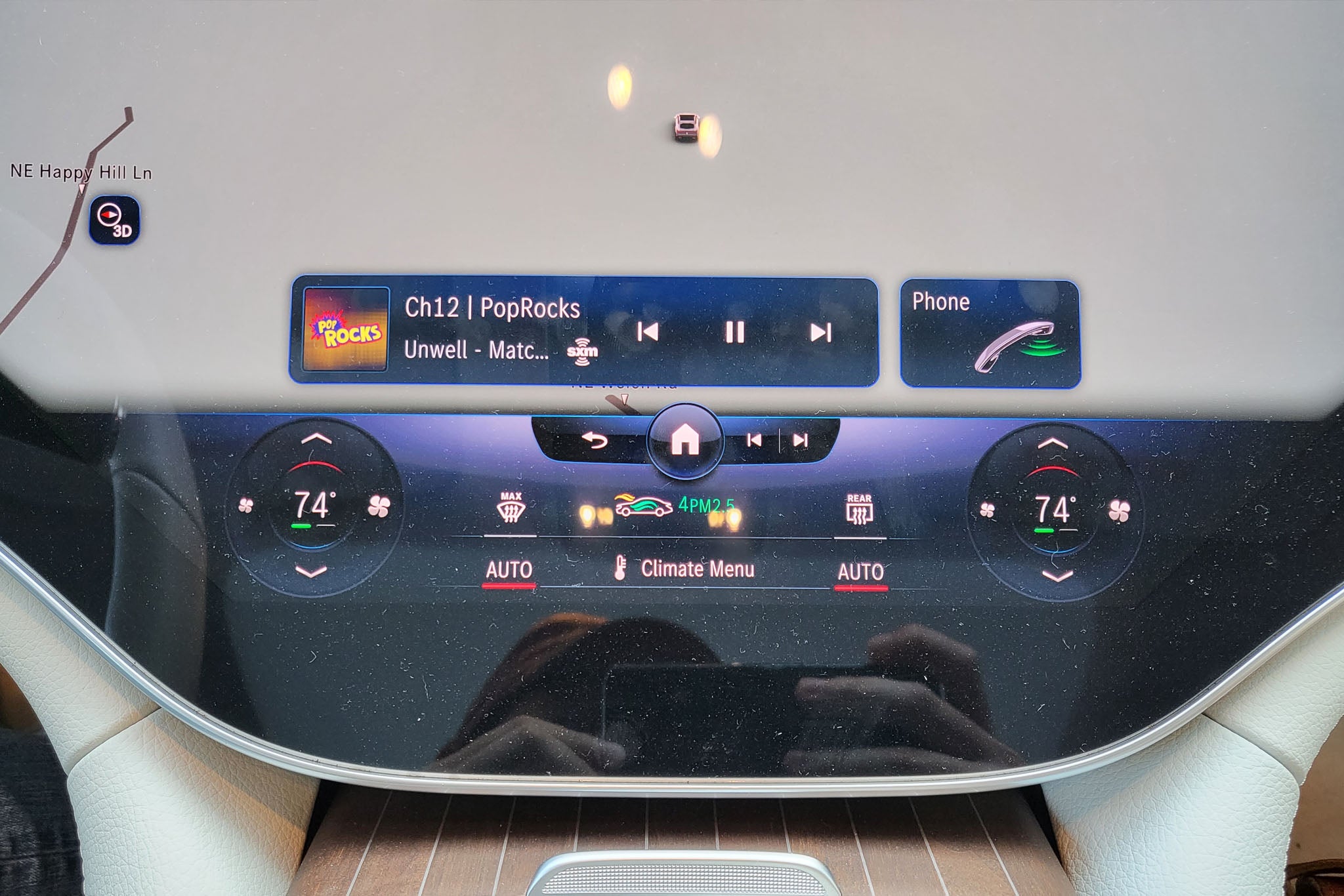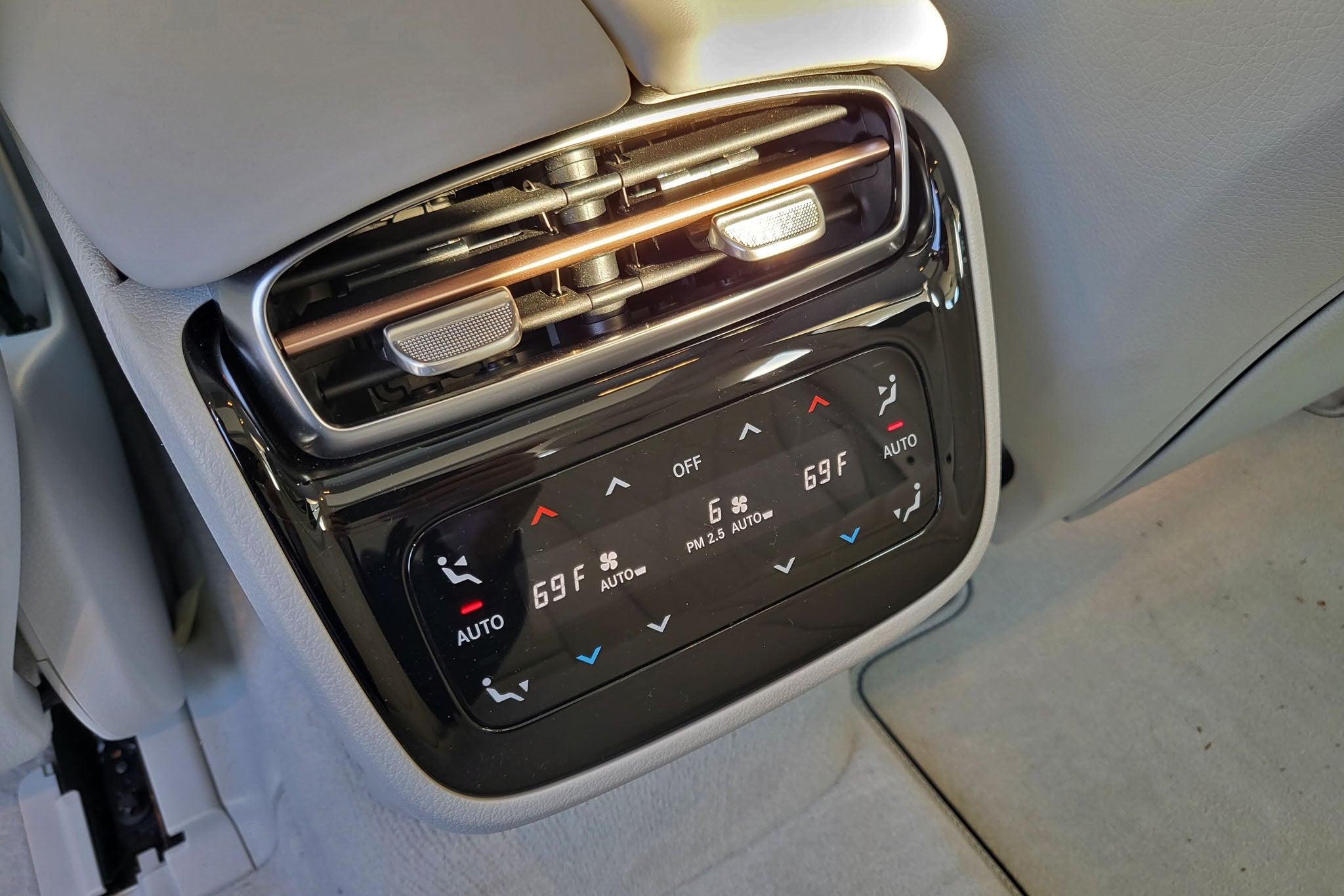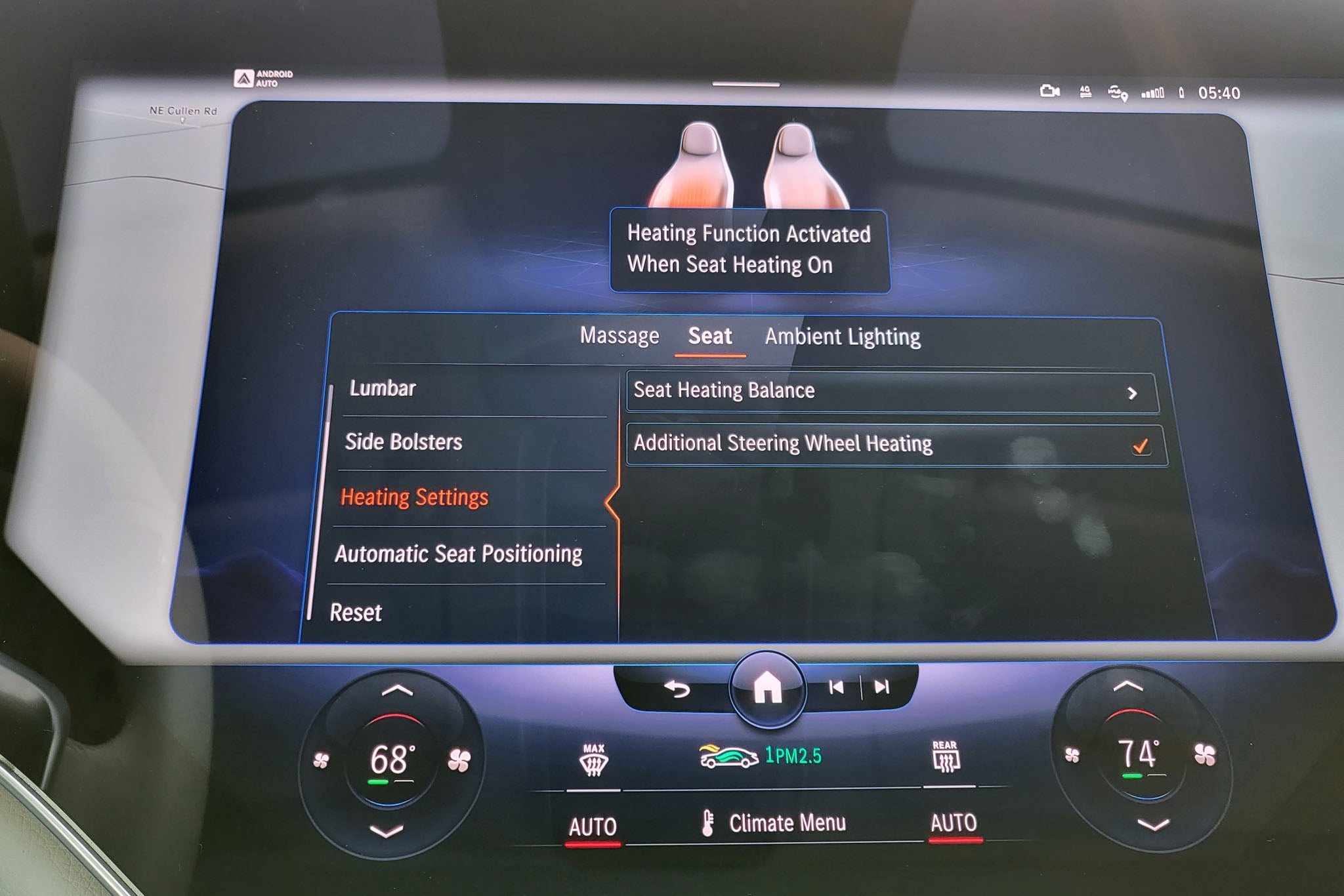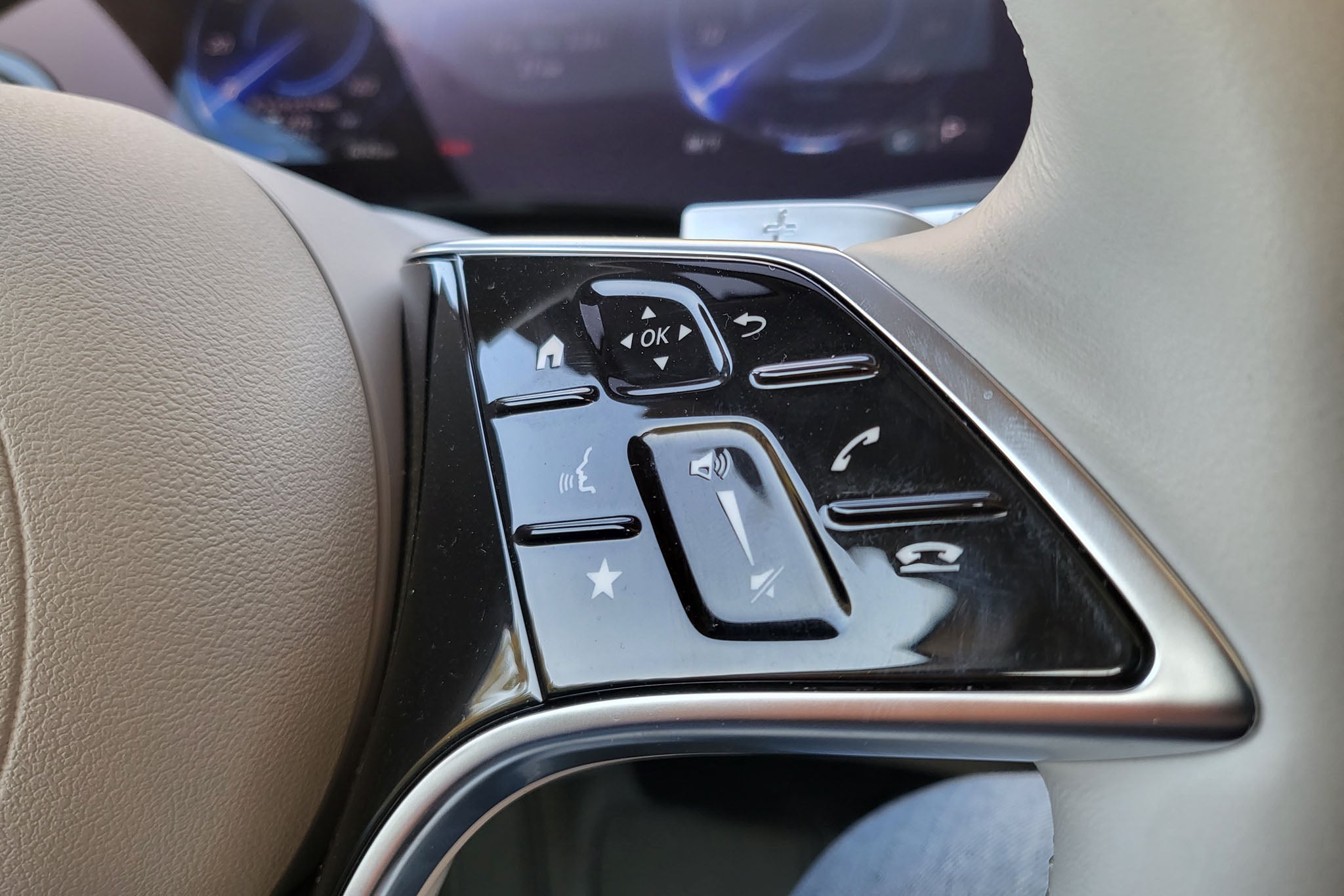If I told you everything about the 2022 Mercedes-Benz EQS450+ having never seen, driven in, or ridden in the car, you would be very enthusiastic about it. Indeed, it's a car that sits on a solid architecture with a lot of great features. It gets many of the vital basics right. But there are also a lot of little things wrong with it.
It has more than 400 miles of realistic range—well more than the EPA claims—a slew of comfort features and adequate power. It attacks all of the skepticism associated with electric cars head-on. Beyond that, though, the ride, braking, and interior interactions need work. The technology inside can likewise be simultaneously amazing and overwhelming. The stars of the show are bright, but there's plenty of dark space around them.
Granted, many of the foibles I have with the EQS are what you might consider first-world problems. But Mercedes, the world's premier luxury automaker, is in the business of solving first-world problems. It should have done more of that here.

2022 Mercedes-Benz EQS450+ Review Specs
- Base price (as tested): $103,360 ($125,730)
- Powertrain: 107.8-kWh lithium-ion battery | 245-kW permanently synchronous electric motor | 1-speed transmission | rear-wheel drive
- Horsepower: 329
- Torque: 419 lb-ft
- 0-60 mph: 5.9 seconds
- Seating capacity: 5
- Cargo volume: 22 cubic feet | 63 cubic feet with the rear seats down
- Curb weight: 5,597 pounds
- EPA Range: 350 miles
- Quick take: There are a lot of good things going on here, but not enough to make this a truly great luxury EV.
- Score: 7/10
Mercedes' electric nomenclature works like its regular cars—at least for its sedans. C is the smallest, S is the biggest, and E is in between. EQ means electric. The result of this system is EQS: the biggest electric sedan the German automaker produces. The EQC is a crossover though. We'll just let that slide, I guess.
Blobby Outside, Pleasant Inside
This, then, is the flagship Mercedes EV. And the most expensive electric car the company currently makes looks like a wireless mouse. To be fair, it looks that way because it's the most aerodynamic production car out there. The Lucid Air is almost as slippery, though, and that car has a well-defined hood. More compromise for styling would've been nice here. It will, after all, have to contend with the likes of the very handsome Cadillac Celestiq and positively stately Rolls-Royce Spectre in its yet-to-be-released range-topping Maybach trim.
Peter Holderith
The interior is equally controversial. There are almost no hard buttons, not even on the steering wheel. They may look like hard buttons, but many functions are controlled with a swipe. I'm getting ahead of myself here, though. This car is available with what Mercedes calls the Hyperscreen. Fifty-six inches of glass-covered displays that encompass the vehicle's entire dashboard, even integrating two turbine-shaped HVAC vents. It's certainly something.
Almost all of the vehicle's major functions were controlled by the Hyperscreen including climate, navigation, and media. There were some hard buttons for a few features like the heated/cooled seats, cameras, and other things, but for the most part, the magic happened on the touchscreen. I'll go into the implications of this a little further down in this review because there are a lot.
Peter Holderith
Beyond the Hyperscreen, the interior was very Mercedes. The leather and wood were all very nice. The seats were very plush and comfortable, offering suede pillows on the headrests. The white interior of the test car was already starting to show a little wear on the driver's seat, though. Making up for it was the deep, beautiful blue leather on the dashboard and upper door cards.
Heated and cooled seats are available in the rear but the test car was not equipped with them despite costing a hair over $125,000. Those in the back do get to control their own heating and cooling through the vents though, and they even get their own vents on the B-pillars.
Just Enough Electric Horses
The EQS, like many electric cars, is pretty heavy. It weighs about 5,600 pounds. Luckily, 329 horsepower is delivered by an electric motor at the rear wheels, and it’s got plenty of responsive torque off of the line to merge into traffic. The EQS450+ will hit 60 mph in just under six seconds, but the power drops off pretty quickly after that. At one merge, I initially felt like I could easily make it into the flow of traffic, but the power didn't last quite as long as I had hoped and I cut it a little close. In other words, its initial grunt that's very present around town is not so present on the highway, at least in sustained acceleration.
This car has just enough perceived power to feel luxurious, but if you wanted a faster version, the higher 580 trim has almost 200 hp more and another electric motor on the front axle, which will help it everywhere. Sometimes, I felt like it could use that extra power.
What I didn't feel like it could use was more range, though. The EPA gets it very wrong. I got 400 miles off a charge with no problem despite a rating of just 350 miles from the government agency. The EQS can likewise be extremely efficient when you want it to be, and it has some great tools to enable that.

Driving the EQS
This thing’s drivetrain was damn-near rock solid despite the slightly troublesome power delivery. The impressive range pretty much eliminated any anxiety I had about charging, which itself was also very easy and fast. The most capable charger I tried was 150-kW, and that got me from around 20 to 80% in half an hour. In the EQS, that equates to hundreds of miles.
There were also many ways to try and extend my efficiency. The car has a whole efficiency menu where it showed me all the things that were using extra power, told me how much range I would get by shutting them off, and allowed me to do so with one touch on the screen. That's just smart.
Likewise, it used shift paddles like a normal gasoline-powered car to adjust the level of regenerative braking. A "downshift" with the paddles increased the level of regen, although there were only two steps and a "coast" mode. Strangely, there was no one-pedal driving. The heaviest regeneration setting is very similar, though.
Peter Holderith
In terms of efficiency, it was possible to squeeze out about four miles per kilowatt-hour driving very carefully. Since the car has a 107.8-kWh battery, a range of around 400 miles makes sense in this context. In normal driving, I got closer to around three miles per kWh, though. All of my driving was also done at comfortable ambient temperatures. Colder temps will degrade the range considerably.
An Army of Foibles
It’s almost unfortunate that the drivetrain is so good because, in contrast, a lot of the other parts of this car just aren’t. You may notice I have not detailed how this car rides or handles in the driving section. That's because it feels big, handles strangely, and rides pretty poorly.
To be fair, the size is unavoidable. It's a big car. It does have rear-wheel steering, though, which makes its turning radius amazing for its dimensions. That being said, it only helps with parking and maneuvering in tight areas and doesn't make the car feel any more nimble or spritely when you're driving at normal speeds.
The handling was unusual because of the very disconnected steering, low center of gravity despite its immense weight, and very hard tires. I do not recommend driving this car in any sort of spirited manner. It feels big and the grip disappears suddenly. A few times mid-corner, I could tell the car didn't like the forces involved, but I wasn't sure how to address it. Less throttle? Apply some brakes? More steering angle? I just didn't know, and that made me pretty uncomfortable.
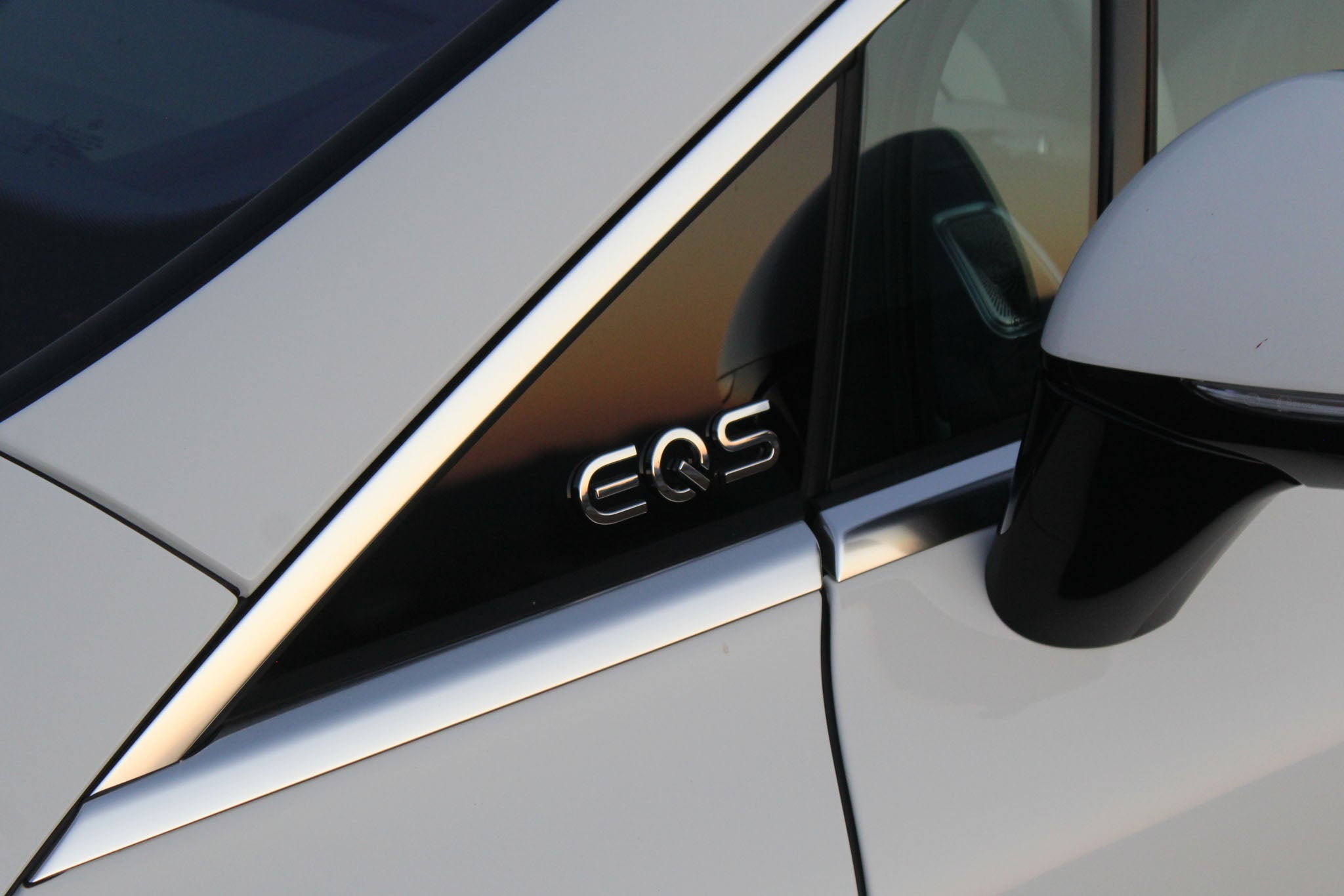
As a side note, the brakes are also unpredictable in terms of the level of stopping power and the pedal location itself. The pedal physically moves up and down depending on the level of regeneration selected, which caught me off guard a few times. Likewise, stopping power feels weak in most positions. As a result, automatic emergency braking engaged unexpectedly when approaching another car, which was very unpleasant. I thought the car had more stopping power to give. It apparently did not.
The ride was really the part that triggered my overall negative impression of the car's dynamics, though. In simple terms, it made me and other passengers carsick. There was no need to pull over, let me be clear, but it made us all a little nauseous on more than one occasion. It wasn't my driving, I assure you, the car just never really seemed to settle, even on a highway with just a few imperfections. However, your mileage may vary and it could’ve just been this particular vehicle, a well-worn press unit equipped with the complicated air suspension option.
There is also practically no difference between the ride in sport and regular mode, which made attempts to address this quality of the car frustrating.
Interior Quirks
The interior is another place that has a lot of little funny things going on. The first is that there are no dedicated physical media tuning buttons anywhere in the car. You can change songs from the steering wheel, but it's a submenu that must be selected with a swipe up or down. A swipe left or right changes the song. The system is not very good at determining which swipes are vertical and which are horizontal. I think you can probably predict the result of this. There are physical volume buttons, thankfully, but a knob would've just been better.
There are also no physical climate controls for the front passengers, it's all on the screen. If you want to change the location of the airflow, that's in a submenu along with several other features. Strangely, the rear passengers are blessed with physically clicky HVAC controls, unlike the person driving the car. Despite there being physical buttons for the heated and cooled seats, there is no physical heated steering wheel button, so the only way to turn on the heated steering wheel is to have the heated seats on. This, in my view, is extremely silly. To makes things worse, this is a setting in a submenu. I did not know the car had a heated steering wheel until I found this menu by chance. Also, I apologize for all of the dust on the screen. It's constantly covered in fingerprints and dust.
Peter Holderith
There are about 10 other things I won't bore you with that are all like this. Little things that make you wonder: Why? In many other cars that might be passable. In a Mercedes? It's not. Luxury is ease of use. I don't want to swipe the steering wheel to change songs. A button is just easier. I don't want to access a submenu to make my feet warm. Please, just put that where I can see it.
The shame of all of this is that the things that work well work fucking great. The massage seats are spectacular and I'm not sure why they ever turn off. The seat heating and cooling can also be turned on at the same time. Thank you, Mercedes, for giving me that discretion. Likewise, the ambient lighting, in certain settings, is beautiful and sets a really nice vibe. Combine this stuff with the excellent drivetrain and interior fit/finish, and all of the other problems this car has are genuinely frustrating, to say the least. What is, in its purest form, a great EV is constantly nagged at by an army of small issues that don’t have to exist.
Verdict
It's all there. All of the good stuff is right in front of you. It's just not easy enough to use. Should you buy this car if you’re in the market for a luxury EV? I would still say yes despite its many flaws … if only there wasn’t a slew of other competitors in this segment. The Tesla Model S Plaid, Lucid Air, Porsche Taycan, and Audi E-Tron GT are all in the mix. Soon the BMW i7 will join the pack as well. In short, you have a lot of very competent choices here, and the Mercedes is not the most competent in a few important ways.
These small issues are not enough to detract from the fact that this car, overall, is competent, efficient, and very plush inside. It’s a gaping chasm away from perfect, but even as it sits, it’s worthy of being called a Mercedes. The things that are needlessly fussy just have to go away, though. This brand absolutely knows better.
Got a tip or question for the author? You can reach them here: [email protected]
